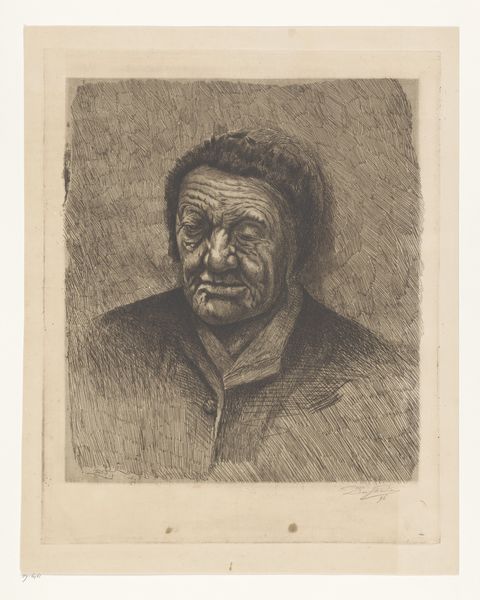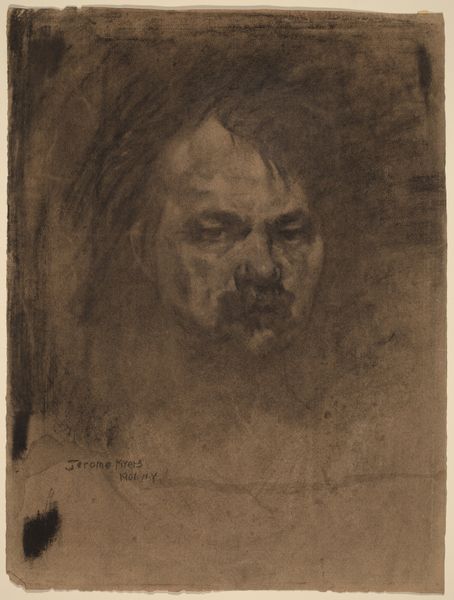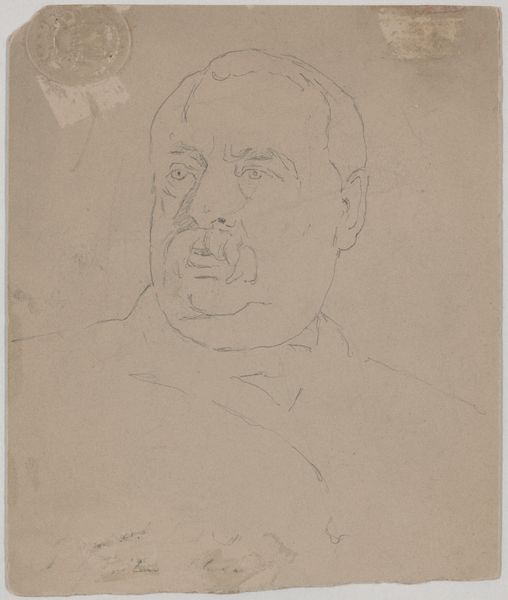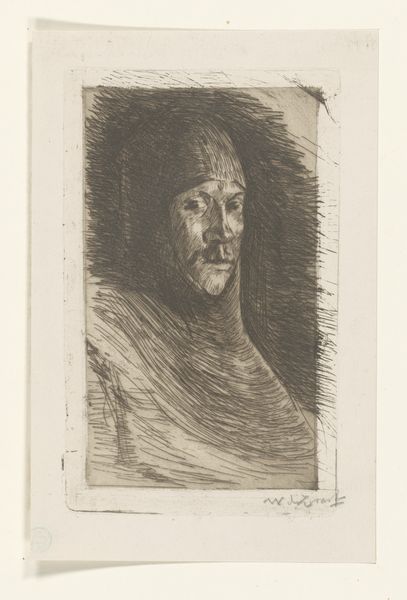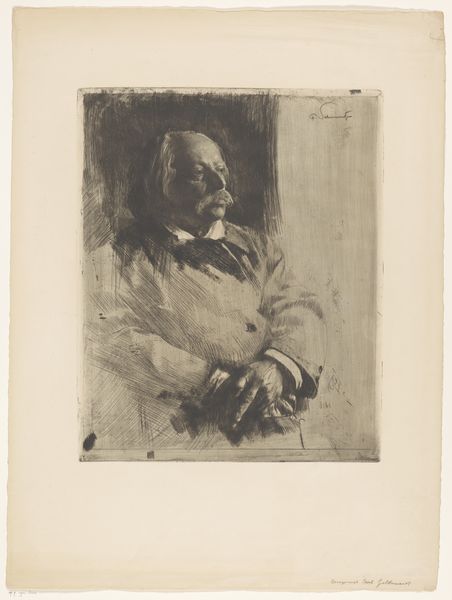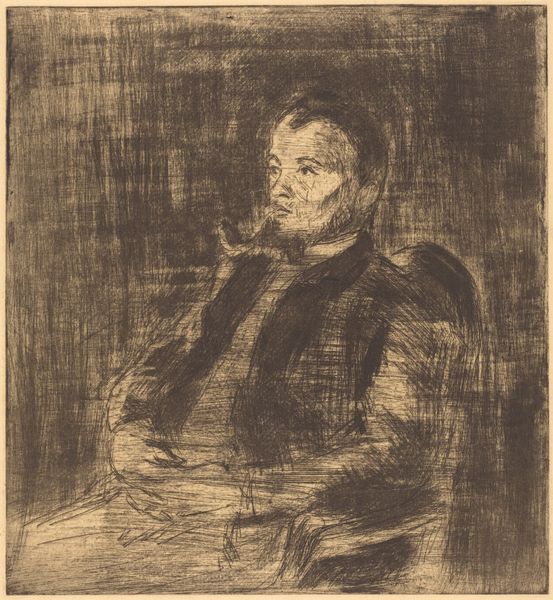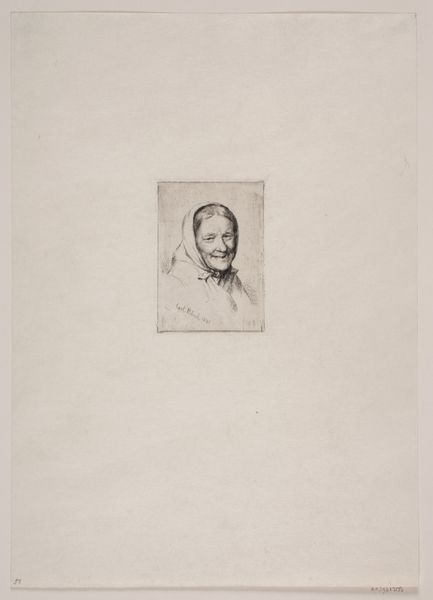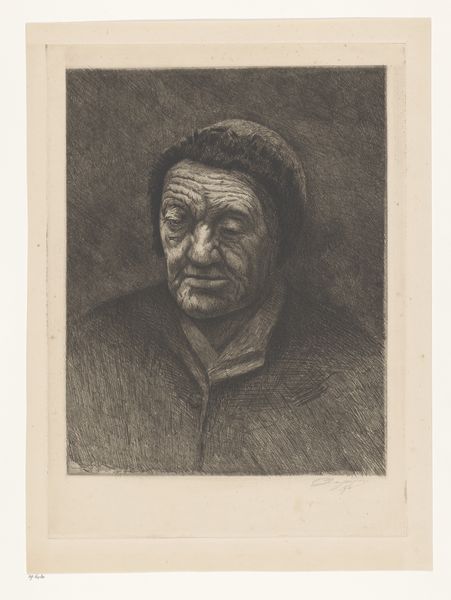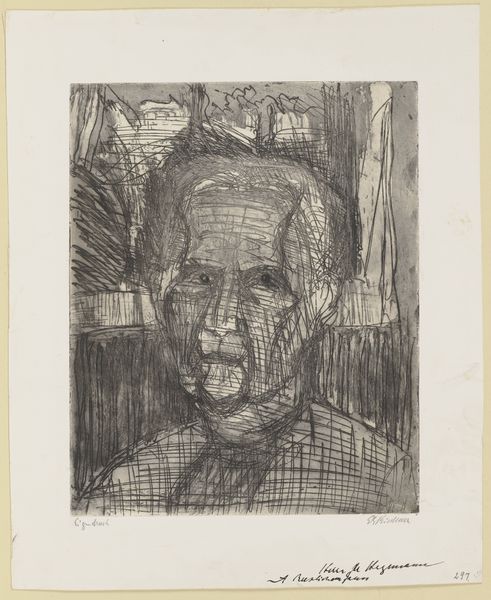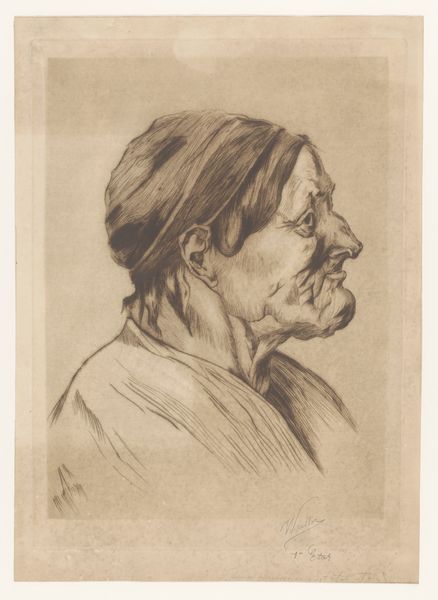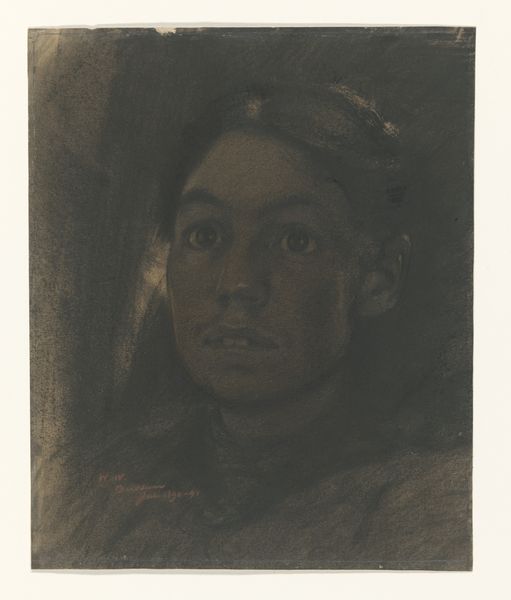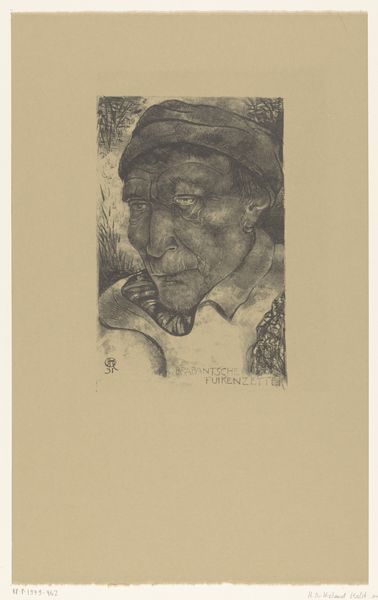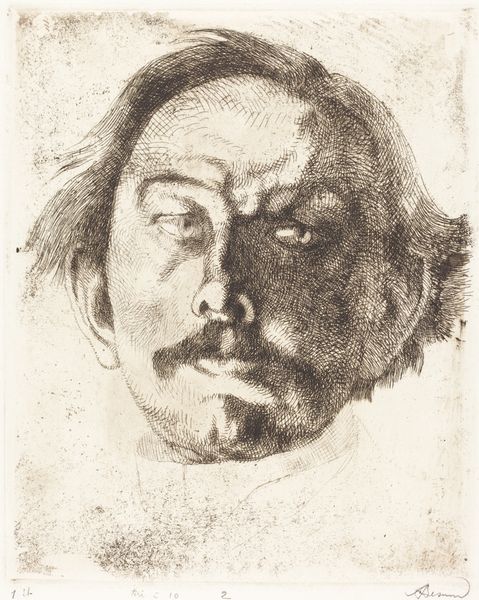
drawing, charcoal
#
portrait
#
drawing
#
dutch-golden-age
#
pencil sketch
#
charcoal drawing
#
charcoal art
#
pencil drawing
#
underpainting
#
charcoal
#
realism
Dimensions: height 330 mm, width 290 mm
Copyright: Rijks Museum: Open Domain
Curator: Here we have a striking drawing, “Mansportret,” by Willem Witsen, created sometime between 1870 and 1923. It resides here at the Rijksmuseum. Editor: Immediately, I’m drawn to the tonality. That restricted palette—it’s all subtle variations in charcoal gray, giving the portrait a somber, almost haunted feel. Curator: Charcoal, yes, allows for a remarkable play of light and shadow. Portraits have always functioned as symbolic carriers of identity, haven’t they? This somberness that you mentioned gives us a clue about how the person may have wanted to be perceived or remembered. Look at his stern, unsmiling face and somewhat piercing stare! Editor: And consider the *process*. Charcoal is such a direct medium. Think about the hand of the artist, physically grinding those pigments, applying pressure to the paper. What was the market like for portrait drawings in that time period, anyway? Was charcoal valued more for preparatory sketches, or was it increasingly accepted as a final medium, capable of rendering the nuance a painting might offer? Curator: Interesting questions. There’s a powerful realism to the way Witsen captured the likeness here, connecting to the Dutch Masters tradition, but even more broadly with the visual codes and symbols we humans use to recognize our species and categorize it. What clues are visible to us—do you see any signals or indicators of identity? Editor: I notice the way his cravat or scarf is knotted so simply, without ostentation. Even the rapid strokes and unfinished areas suggest a working-class practicality over upper-class vanity. Though, speaking of class... that paper is aged! I’m curious about archival practices, about what survives and what doesn't—what are the preservation methods deployed on drawings? What kind of story can the material components of an art piece tell us about it’s importance throughout the decades, and how that shifts and changes? Curator: A good point. In a portrait like this, we seek more than just a likeness; we search for character, perhaps even a glimpse of the soul—rendered in light and dark. Editor: Exactly. By understanding the art and materials involved, and what it represents for different classes, we better understand our history and its connection to labor, materialism, and consumption. Curator: Precisely. Art offers us endless ways to observe the human spirit. Editor: Indeed, a dance between presence and material record.
Comments
No comments
Be the first to comment and join the conversation on the ultimate creative platform.
